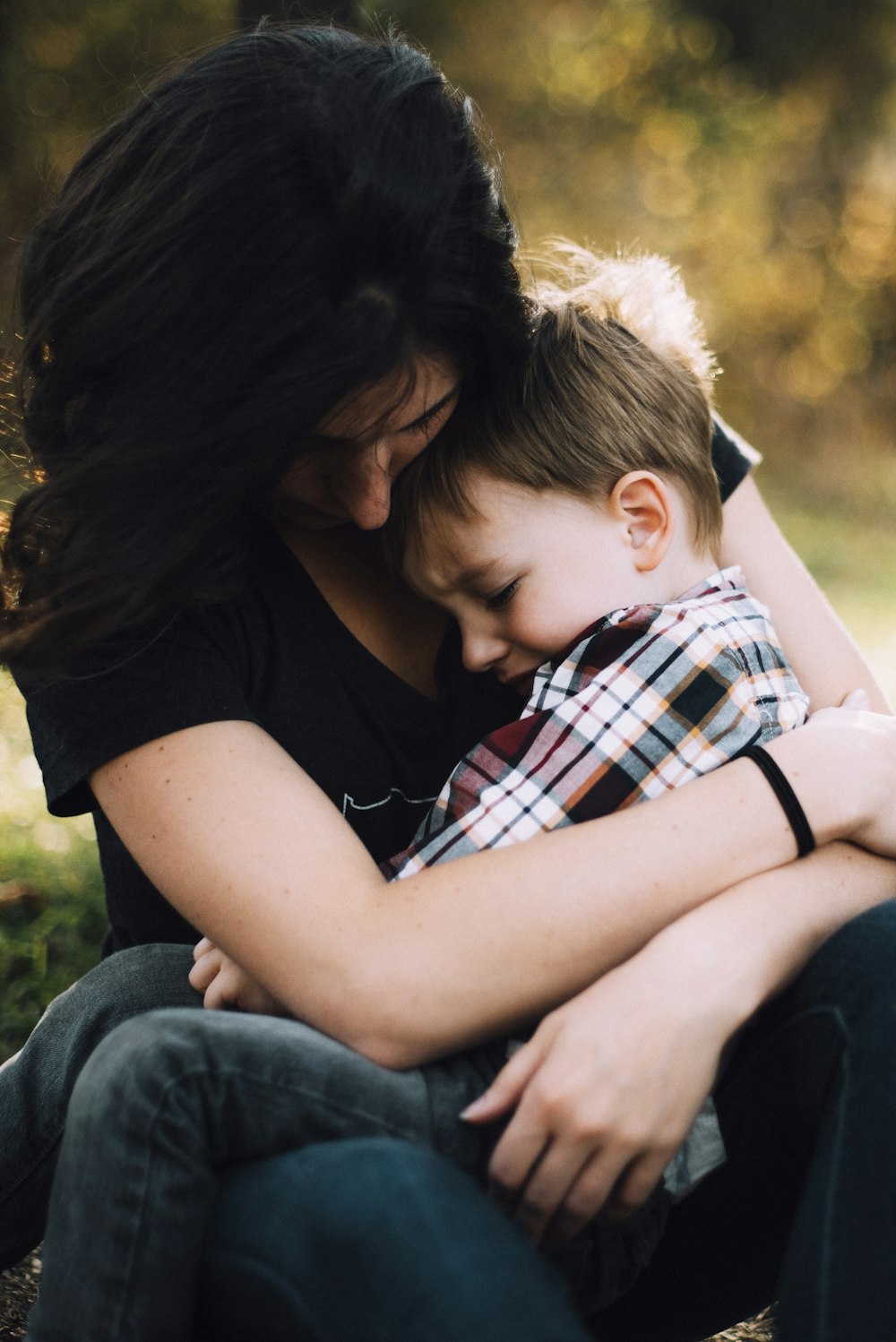When facing a new diagnosis or developing new behaviors, you’re probably looking for a treatment plan. Our child only eliminates gluten, and we have noticed an improvement in behaviors, eczema, and belly pain. This article is a pivot from our usual articles about family travel and autism, but it explains why so many of our posts mention a gluten-free lifestyle.
I am a Registered Nurse and Advanced Practice Nurse with ten years of experience, and I believe in evidence-based medicine. While learning about the gluten-free diet for kids with autism, I wanted to know what science says. This is why so much of our blog describes both sensory-friendly vacations and gluten-free dining.
Does the Gluten-Free diet help kids with Autism?
Yes, the gluten-free casein-free (GFCF) diet helps some children with autism, but only those who are also experiencing gastrointestinal issues. The GFCF diet can help children with autism who experience the following:
- Gastrointestinal disorders
- A leaky gut
- Microbiome disruption

The gluten-free diet has been used for kids on the autism spectrum for decades. Many families wonder if there is any benefit- so we’ll tackle all the ways that the gluten-free (GF) diet helps kids with autism.
Disclosure: I may get a small amount of money from any affiliate links that you click. However, I only recommend products that our family loves.
What is a gluten-free diet?
Gluten is a protein found in cereal grains like wheat. It’s what gives dough its elasticity. A gluten-free diet means removing all gluten-containing foods.
You may think it’s pretty straightforward. However, gluten is in a lot of the food you probably eat. If the label contains any of the following, it’s not gluten-free. Check all labels- even seasonings!
- Barley
- Brewer’s Yeast
- Durum
- Einkorn Wheat
- Farina
- Farro
- Kamut
- Malt
- Oats (unless gluten-free)
- Rye
- Semolina
- Spelt
- Triticale
- Wheat
- Wheatberries
Gluten is also found in cosmetics and hygiene products, such as lip balm, detergent, soap, shampoo, sunscreen, and toothpaste. While eating gluten-free may be beneficial, many swear by a gluten-free, casein-free (GFCF) diet. Children who adhere to this diet also avoid a milk protein called casein.

What is the microbiome?
Gut health is complex- a healthy human gastrointestinal (GI) tract is more important to the entire body’s health than previously thought. The microbiome is the normal bacteria in your GI tract.
If unhealthy bacteria cause inflammation in your gut lining, your child may experience GI distress and possibly poor absorption of essential nutrients. Children with microbiome issues often have a leaky gut.
What is a leaky gut?
A leaky gut literally means that- the lining of the intestines has become more permeable. Evidence supports that removing gluten may completely alter (and even improve) your microbiome (source). A leaky gut can come from physical illness or chronic stress (source).

The problem with leaky gut syndrome is that according to most medical professionals- it’s a great unknown. Dr. Donald Kirby, the director of the Center for Human Nutrition at the Cleveland Clinic, states, “Physicians don’t know enough about the gut, which is our biggest immune system organ.”
How are autistic children at risk for leaky gut syndrome?
Frequent GI problems affect children with autism more commonly than others. While leaky gut occurs with Crohn’s Disease or Celiac- it can also occur because of food allergies, medication, and even radiation therapy. Autistic children often have issues with gut health. They are also more likely to be on medications and have food allergies.
Unfortunately, leaky gut symptoms aren’t unique- other diseases and health conditions share the same signs and symptoms. This means that medical tests often fail to uncover a definite cause of the problem.
Does the Gluten-Free diet help kids with Autism?
In order to see if it will help your child, experts recommend taking about two to three months, where you completely remove gluten from their diet. Every child is different.
You may have seen our autism-friendly gluten-free restaurant reviews. Anecdotally, we totally think it minimizes our son’s behaviors. However, a study of a single child (n=1) doesn’t tell us much.
Well, it’s a good thing that I nerd out over current research. The evidence shows that our gluten-free pursuits have real benefits!
What does the research say about the gluten-free diet for kids with autism?
Study #1 introduced a gluten-free diet to children on the spectrum and monitored them over the course of 5-months. The data was obtained through parent and teacher questionnaires, observations, interviews, and tests. Results showed that children on the spectrum showed behavioral improvement on a gluten-free diet. (source)

Study #2 was a 2013 review of the current evidence surrounding gluten avoidance and autistic children. The overall results demonstrated an improvement in developmental outcomes for at least a portion of those studied. The gluten-free diet may have significant positive benefits for children on the spectrum and should be further studied. (source)
Study #3 says that there is no evidence either against or in favor of removing gluten from ones’ diet for managing “symptoms” of ASD in children (source). This study evaluated the behavior of autistic children with both a GF diet and one filled with gluten. However, there were only 66 children in this trial.
Study #4 links autism to epigenetics and the microbiota-gut-brain axis (source). While confusing, the microbiota-gut-brain axis essentially means how the microbiome and gut health affects the Central Nervous System. Epigenetics means that the DNA is there, but something in the environment triggers how it is expressed.
This means that two children have the same DNA predisposing them to autism. However, if they are never exposed to that environmental factor, their genetic code won’t express the traits of autism spectrum disorder (ASD).
The main question is, what environmental factor flips the autism switch?
How does a gluten-free diet for kids with autism help behaviors?
Children on the spectrum may experience:
- delayed speech
- diminished eye contact
- impaired social skills
- repetitive behaviors
- delayed motor skills
- sensory integration issues
- moos changes
- food sensitivities
- GI distress
A gluten-free diet may help kids with autism experience a decrease in developmental behaviors by reducing other painful symptoms in their gut. First, removing gluten may improve gut health in children who are predisposed to GI tract issues. Secondly, children on the autism spectrum are more likely to have painful GI symptoms like:
- food allergies
- eczema
- constipation
- diarrhea
- candida (yeast) overgrowth
- sleep disorders (source)
This means that children who are both autistic and have GI discomfort will feel better once the triggering factor is removed. While changing your child’s diet may decrease their behaviors, removing gluten may also alleviate other painful symptoms. Some autistic children struggle to eat different foods, but I found luck with the Kid-Friendly Autism & ADHD Cookbook.

What are gluten-free resources?
Many children with autism have sensory issues that limit their diet, to begin with. For many parents, making sweeping dietary changes seems impossible. I’ve gathered some resources for where to get gluten-free food and how to navigate common childhood issues involving gluten.
- The Autism Research Institute has a page covering information regarding the gluten-free casein-free diet.
- The Find Me Gluten-free app is completely free and available to both iPhone and Android users. This app will find you gluten-free meals in any city across the country. You can check out social proof- reviews from customers who are looking for gluten-free restaurants, just like you.
- The Celiac Kids Connection gives information regarding keeping your children gluten-free at home and school. The Celiac Kids Connection has articles about notifying the school and discussing meal expectations, snacks, and classroom celebrations.
- If you have a Trader Joe’s nearby, they will give you a printout of the gluten-free products they have available. Sprouts, Wegman’s, and Whole Foods are also known for their gluten-free options. If you don’t shop at any of these, ask a store employee for a dedicated section for special diets.
- Walt Disney World has amazingly tasty gluten-free options. Cast members truly take food allergies seriously. Mobile ordering saves time from waiting in line and minimizes frustration.
- Reader Dawn states, “when all else fails, eat at Outback Steakhouse. They have the best safety protocol I have ever dealt with.”
What else can we do to help our autistic child?
Autism resources, early intervention, and support are beneficial. Check out our post about the top 20 tips to support your kiddos’ future.
Visual Schedules or PECS
Visual schedules help non-verbal or children with communication issues identify the plan for the day. Picture Exchange Communication System (PECS) cards are common and cheap communication aid for kids with autism- they can be incredibly helpful for identifying elusive requests. Check out our Pinterest boards for what we use.
Daily Routine
Routine is essential for our son. Once we’ve outlined our schedule, we stick to it. He prefers to do the same things on weekdays. We also need to tell him the plan for the weekend day. Being spontaneous or having a lazy day is frustrating and causes significant overwhelm.
We have a large family of four children and two adults. It’s imperative to find a way to minimize sensory overload. We have a tent that he can hide in, blackout curtains in his room, and lots of tricks to help him block out the chaos.
Applied Behavior Analytic Therapy (ABA)
Applied behavior analytic therapy, known as ABA, has incredibly controversial roots. It started as behavioral therapy used intensively to help autistic children. Unfortunately, the ABA therapy of the past used both positive reinforcement and aversive treatment, including punishments like electric shocks. For most ABA therapists, the practice of aversive treatment is long gone.
A 2019 study examined the effects of two different types of ABA (traditional vs comprehensive) on 28 children with autism. The results showed that children acquired increased skills when compared to a control group (source). However, a comprehensive ABA program actually increases IQ scores.
Comprehensive ABA treatment works well to improve safety, social, play, vocational, and coping skills. It also can improve cognitive function, integration in the community, language, and communication.
However, actually autistic adults state that it can be traumatizing for children. Any positive affirmations are withheld until they comply with specific behaviors. ABA therapy is a treatment that requires a lot of careful thought as it can be harmful to the autistic person.
Sensory Tools
We’ve been extremely successful in providing sensory tools, fidget toys, and weighted blankets as methods that help regulate our child when he is overstimulated. Others have success with open play areas, headphones, or firm touch.
What’s the takeaway?
Autism occurs because the brain is unable to prune nerve synapses correctly. While changes in diet may have benefits, it’s not going to treat the root cause.
When you tackle a gluten-free diet for kids with autism, it may seem daunting at first. You will notice a trend across our blog. Our dining articles focus on the challenges of gluten-free living. We need to be able to travel with our autistic child and remain gluten-free. It takes preparation and patience, but it is possible almost anywhere.
The biggest issue is that we are looking for the magic bean to help our babies. However, we need to understand that autism is not a curable disease (nor do many want it to be)- it’s merely a way our loved one thinks that is different from the mainstream.
Have you or your child gone gluten-free? Did it help with gut or behavioral health?
Sign up for our email list. Follow along with our gluten-free adventures on Facebook, Instagram, and Twitter.








I was a middle school classroom teacher before a homeschooling parent, and I saw a huge behavior difference in my students that I had more than one year that implemented a GFCF diet for autism. It is amazing what food can do to a body and how eliminating foods that may be “healthy for someone else” can greatly improve issues in others.
We noticed big changes with our son ( severe ADHD) with a GFCF diet. That helped him tremendously, along with other things like the Brain Balance program (where we saw HUGE changes) and chiropractic help. It feels like putting puzzle pieces together to find the right combination of help. We’re almost on the other side now. He’s probably 90% better.